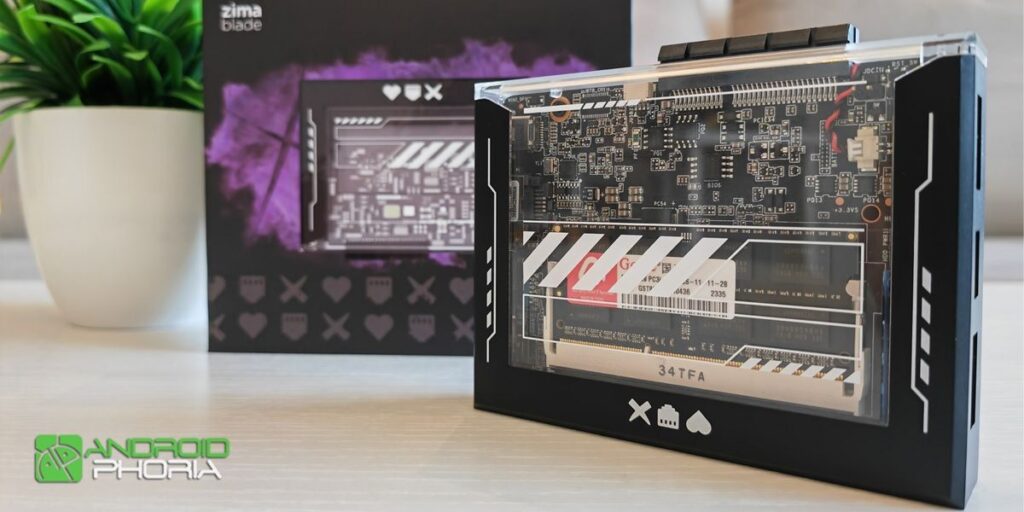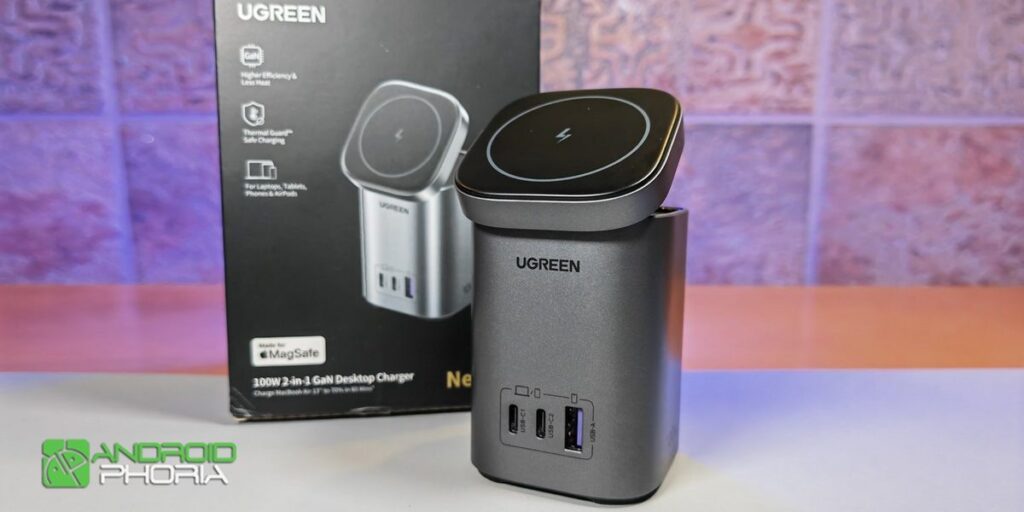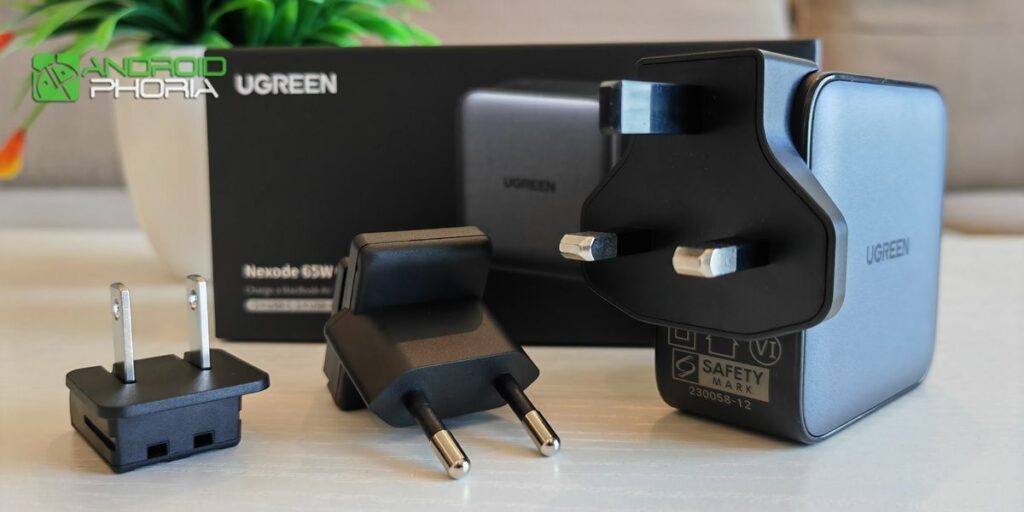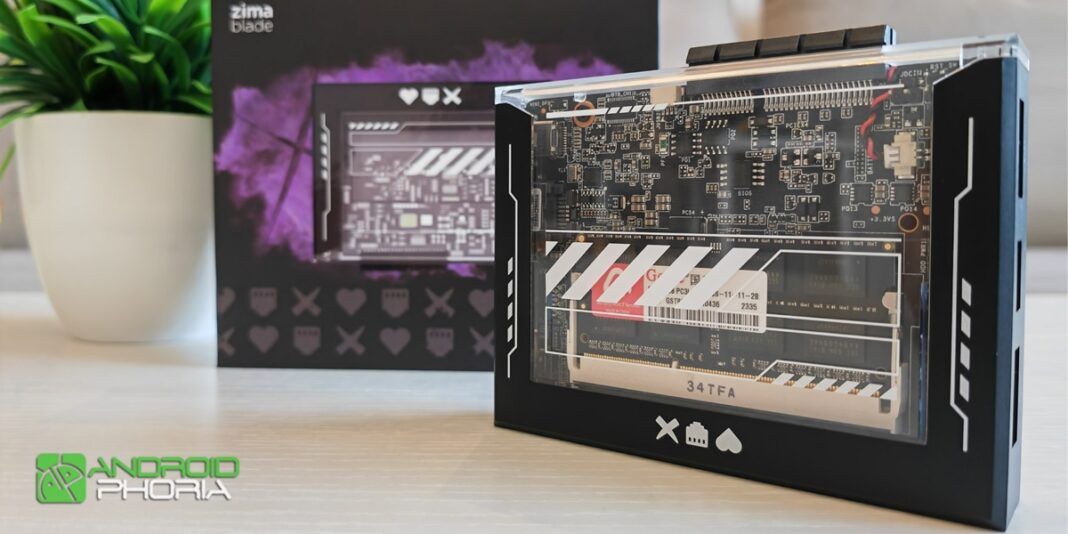
One of the latest trends in technology is the use of Single Board Computers (SBC) as personal servers. These tools allow you to store and access personal data from anywhere and on any device. They are an alternative to cloud storage services, which may have space, security or privacy limitations.
Plus, because of their open nature, you can turn them into a media center, a retro console, an AI host, or an ad blocker. When you hear all this, you think that the use of single-board computers is suitable only for computer scientists, but nothing is further from the truth.
IceWhale Technology Zimaboard has demonstrated that the operation of these devices is so simple that anyone can use them. In this review, we’ll examine the ZimaBlade Personal Server from the same creators as ZimaBoard, which offers more connectivity options and a more complete package.
ZimaBlade review in Spanish: Pocket x86 server that can give you a lot of use
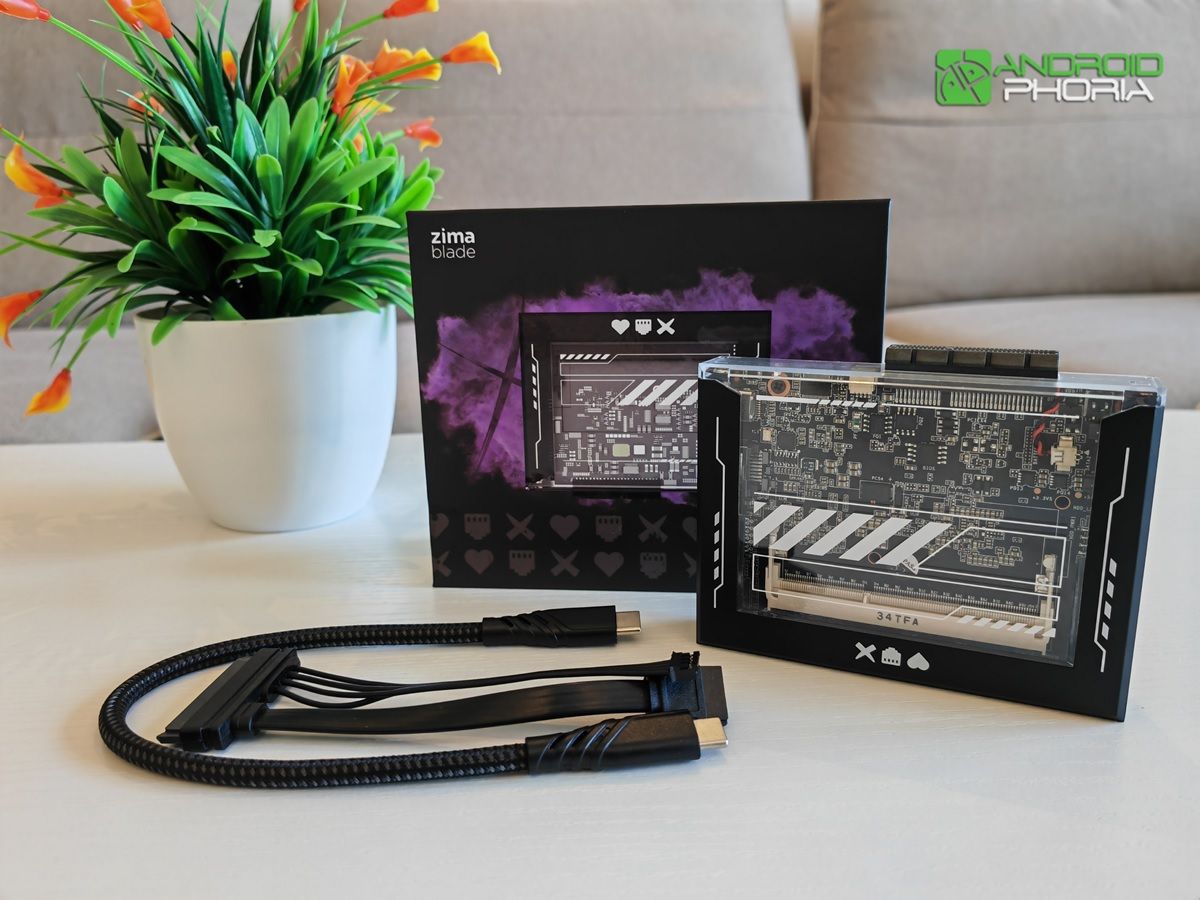
ZimaBlade is a single board computer with a compact and stylish case. It connects to your home network via an Ethernet cable, and thanks to the PCIe Express 2.0 input, you can expand its capacity using all kinds of modules. It uses CasaOS (based on Debian) as an operating system, which allows you to configure it as you wish: as a multimedia or storage server, as an ad blocker, as a backup system, etc.
If you don’t really understand what we’re talking about, don’t worry, we’ll skip the technical paper and explain in depth how this Zimablade works and how you can use it.
ZimaBlade specifications
What is ZimaBlade and what are its features?
Simply put, the ZimaBlade is a very small computer. It’s not as small as the ZimaBoard, but it’s still extremely compact: it’s about the same size as a 2.5-inch hard drive (though slightly thicker).
The case is removable and has a great design: a transparent top made of injection-molded polycarbonate, a black frame with white details and an aluminum alloy back that acts as a heat sink for the processor. The aluminum section has 4 rubber feet so you can place the ZimaBlade on the table without the risk of slipping.
Unlike a traditional mini PC, the Zimablade doesn’t include RAM (at least not in the most basic version). For many, this is a positive aspect as it allows you to keep costs down and reuse some of the compatible RAM you already have at home from an old laptop. However, in most cases it is very annoying to buy something extra to use the product. The good news is that the “Early Bird Kit”, “Advanced Kit”, “NAS Kit” and “12-Core 48GB Cluster” editions include RAM.
Another difference of the ZimaBlade compared to ordinary mini PCs is that it has a PCIe 2.0 input with additional ports from the graphics card to the module. In the following gallery you can see an example of the many types of modules we have connected to ZimaBlade using PCIe 2.0 input and the possibilities this connection gives you.
As standard, the only ports ZimaBlade offers you are Mini DisplayPort for connecting to a monitor, USB-C for power input and data and video transmission, USB-A 3.0 for speeds up to 5 Gbps, two SATA 3.0 up to 6 Gbps for expanding your storage up to 154 TB hard drive and Ethernet. To connect to the Internet at speeds up to 1 Gbps.
It should be noted that both the USB-C port and Mini DisplayPort support up to 4K and a refresh rate of 60 Hz. Ah! And included in the box is a USB-C to USB-C cable and a 12V/3A USB-C power adapter with three different plugs for use in any country. It also comes with a SATA cable.
On the other hand, it should be said that it includes 32 GB of non-replaceable or expandable storage. It’s not bad, but it would be nice to have an internal slot to add an SSD. This way, when connecting additional storage with SATA cables, it will not be too bulky and impractical, allowing for a more compact size.
What can you do with ZimaBlade?
In theory, with ZimaBlade you can do the same with a normal computer, but it does not come with Windows from the factory, but with CasaOS. This operating system is designed for servers, so its interface and applications are designed for the following uses.
NAS (Network Attached Storage): You can configure it to function as a NAS with up to 154 terabytes of storage capacity. Thus, you can use ZimaBlade as an alternative to cloud storage services such as iCloud, Google Drive, Google Photos, Dropbox, etc. AI Tool: By connecting a graphics card (GPU), you can use ZimaBlade in your artificial intelligence projects, for example to run models or generate visual assets. Media Streaming: With the Jellyfin app (or similar), ZimaBlade can easily be used as a media server to stream or play movies, series, music, and photos. That means you can turn it into your own Netflix, Spotify, etc. Retro game console: While not a very powerful computer, it is good enough to run retro games from your favorite old consoles. You can use it as a compact console to take anywhere. Ad blocker and VPN: You can set it to manage your home network to block ads or increase privacy. Home Automation Device Center: Home Assistant can be installed on ZimaBlade and manage all home automation devices.
And best of all, you don’t need to rack your brains to set up these uses. The interface is very intuitive and easy to use, so everything is ready in a couple of clicks. You simply connect ZimaBlade to your router and visit Zima in your PC’s browser.
Another option is to enter the assigned IP directly. This way you will easily reach the configuration page where you have to create a user and that’s it. From the dashboard, you can access the app store and start installing the apps you want without any knowledge.
Although it comes with more than 20 pre-installed apps, you can find more than 50 community-approved apps (and more than 100,000 apps in total) in the CasaOS Store, where you can find what others are looking for. . Of course, if you don’t like CasaOS, you can change it for Windows, Ubuntu, Debian, Raspberry Pi OS, CentOS, OpenWrt, pfSense, Android, LibreELEC, etc.
How does ZimaBlade work and how much does it cost?
The ZimaBlade is available in two versions: one with a 2.2 GHz dual-core Intel Celeron processor and 6 W TDP (model 3760) and another with a 2.4 GHz quad-core Intel Celeron processor and 10 W TDP (model 7700). Needless to say, this latest version is very powerful, with the following performance in the most popular benchmarks.
That means it’s 2 to 4 times faster than the Raspberry Pi 4. We didn’t experience any performance issues, especially when using the apps provided by the store. It’s obviously not a PC for gaming or multimedia editing, so don’t ask it for more than the basic tasks any personal server can handle.
Is ZimaBlade worth buying?
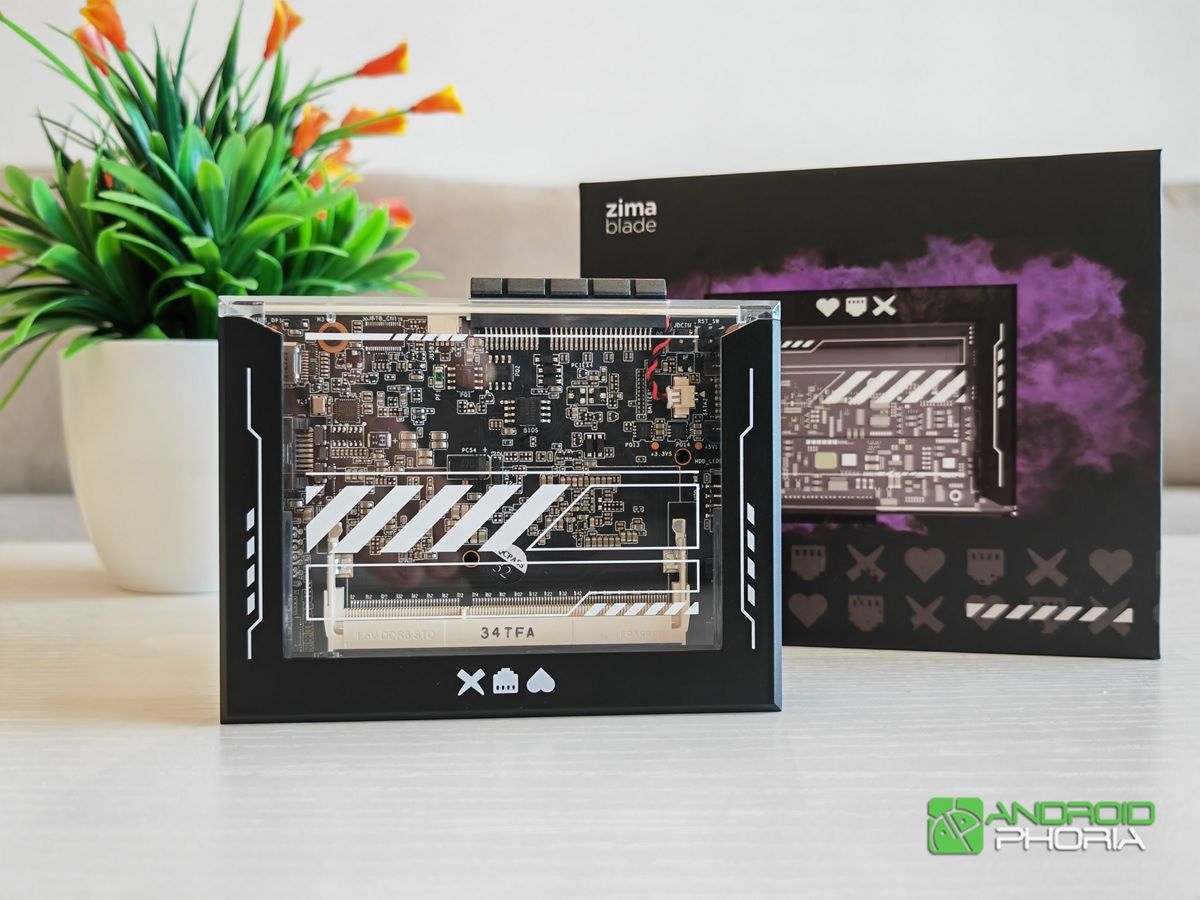
Before we give a summary, we will present the Zimablade prices.
Knives 3760: 64 dollars, includes a dual-core processor, a USB-C cable and a SATA cable. Zimablade 7700: 96 dollars, includes a quad-core processor, a USB-C cable and a SATA cable. ZimaBlade 7700 Advanced Kit: 128 dollars, includes a quad-core processor, USB-C cable, SATA cable, 12V/3A power adapter, (4K @ 60Hz) Mini DisplayPort male to HDMI female cable and 16GB DDR3L RAM. ZimaBlade 7700 NAS Kit: 144 dollars, includes quad-core processor, USB-C cable, SATA cable, 12V/3A power adapter, (4K @ 60Hz) Mini DisplayPort male to HDMI female cable, dual storage drive 3.5”, dedicated SATA Y. cable and 16 GB DDR3L RAM. ZimaBlade 12-core 48 GB cluster: 392 dollarsIt includes three ZimaBlade quad-core processors, three USB-C cables, three SATA cables, three 12V/3A power adapters, two 3.5-inch storage drives, three dedicated SATA Y cables, and 16 GB of DDR3L RAM. ZimaBlade 3760 Early Bird Kit: $72, includes dual-core processor, USB-C cable, SATA cable, 12V/3A power adapter, and 8GB of DDR3L RAM.
For as little as $64 or 60 Euros, the ZimaBlade is one of the best single-board computers you can buy to have your own personal server.
It’s simple to operate and powerful enough to act as a cloud storage, multimedia server, retro console, home automation device manager or ad blocker. Plus, you can use the PCIe 2.0 input to add all kinds of modules, from new ports to a graphics card. It is modular, versatile, powerful and economical. Recommended!
